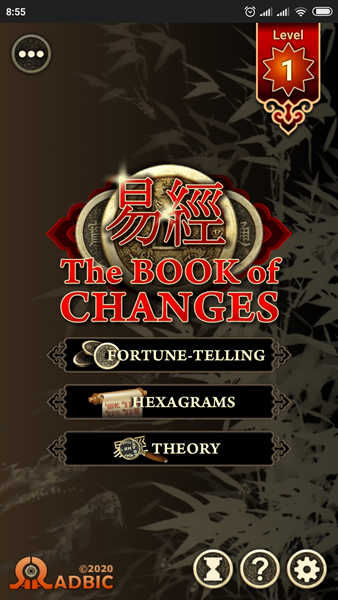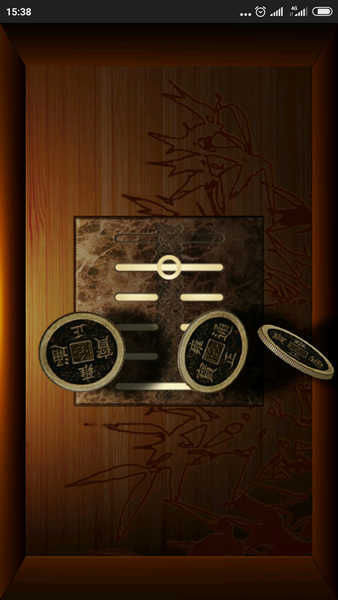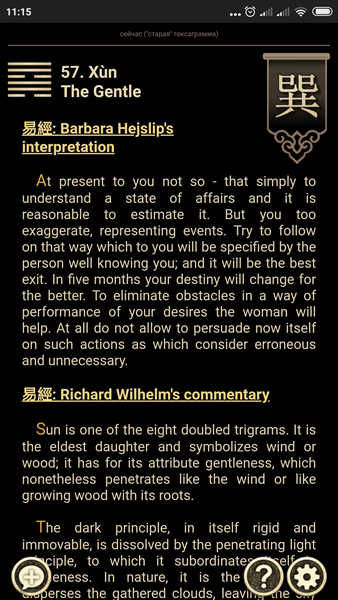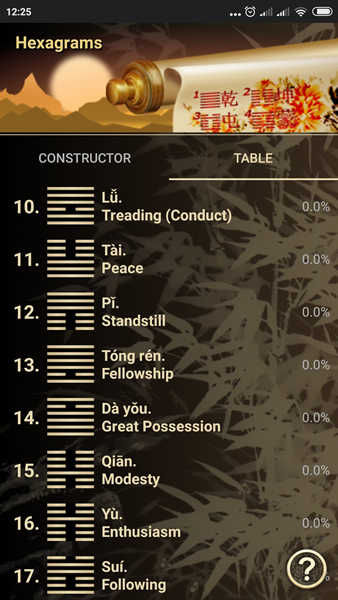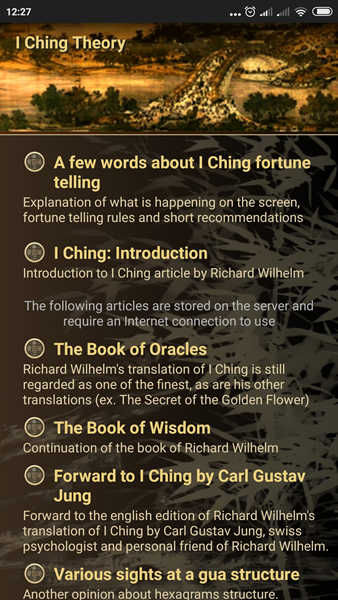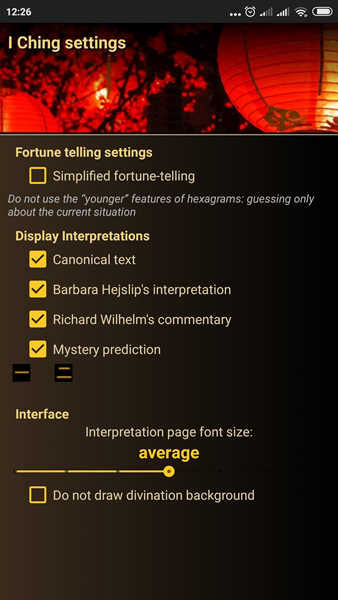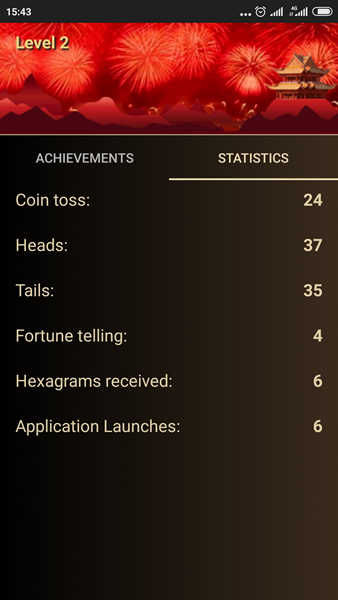Features of the Book of Changes I Ching application
Three-coin method
The application supports both simplified fortune telling with three coins and fortune telling with aging features of gua (fortune telling with three coins option 2.a)
Without random numbers
When calculating the position of the coin, random number generators are not used. The side of the coin is determined by physical calculations of the position of the coin, close to real
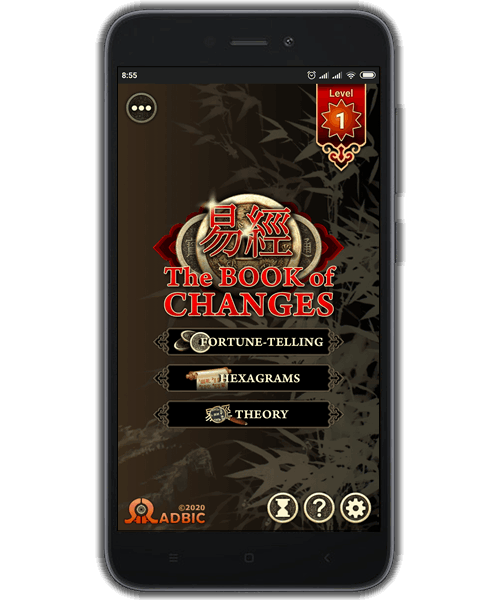
Canonical text and comments
The application allows you to read the result of fortune-telling both in the form of a canonical text describing the hexagram, and in the form of an interpretation of Heyslip and comments others authors
Theory and History
Fortune telling results are stored in a dated fortune telling history list with your comments.
Theoretical articles will help to understand many of the nuances and features of fortune-telling with the Book of Changes
